Introducing the latest myCWT product and service enhancements
Building on our digital, omnichannel myCWT platform, our new products and services will simplify travel management for you and your employees – anytime, anywhere, anyhow.
Note: Featured services may not be available in your country at this time. Please reach out to your CWT representative for more details.
Hear from Chief Product Officer, Erica Antony as she shares the key product highlights of 2024, along with the key areas driving innovation.
-

2040: Baseline, Boom or Bust
As we enter an era of rapid transformation and unprecedented challenges, it is essential for travel managers, meeting & event planners, and corporate decision-makers to look ahead and frame our current strategic thinking with a clear vision of the future. Business travel and meetings and events (M&E) are poised for significant change over the next decade and a half, driven by a complex interplay of sustainability goals, technological advancements, evolving work models, and geopolitical dynamics.
In this paper to mark the 10th anniversary of our Global Business Travel Forecast, we explore, for the first time, a long-term vision of the future and potential trajectories through three distinct scenarios, each offering insights into how these forces should affect policy-making, budgeting and priorities. By examining these scenarios, we can better understand the diverse possibilities that lie ahead and the strategic imperatives required to thrive in each potential future.
Based on trajectory data analysis and interviews with industry leaders, behaviorists and climate tech founders, this forward-looking approach enables us to anticipate changes, strengthen our strategies, and make informed decisions that align long-term objectives. It is through this lens of foresight and adaptability that we can build resilience, seize opportunities, and navigate the complexities of the future.
We invite you to reflect on the insights presented, and consider how your organization can prepare for the opportunities and challenges that lie ahead. Together we can ensure that travel and meetings remain catalysts for growth, scalability and sustainable practices.
- Scenario development is both an art and a science
- Megatrends Shaping the Future of Business Travel, Meetings and Events
- Sustainability goals the new crux of corporate policy
- Technology Revolutionizes Travel Management
- Modern work models spark new travel patterns
- Changing demographics open doors to new opportunities
- Three Scenarios: Base case, boom and bust
- Future-proofing strategies

-

CWT GBTA Global business travel forecast 2025
When it comes to pricing, global business travel has finally reached an enduring, higher baseline. Prices will continue to rise in 2025, but only moderately, so expect a period of normalized growth.
However, this pricing environment, one of marginal gains and price regularity, is fragile. Global leisure travel has now realized a lot of its pent-up demand, while corporate travel has been resurgent, with 2024 edging at preCovid levels.
There are many factors at play, whether its volatile oil prices, labor costs and constraints, inflationary pressures, and geopolitical factors. As this elevated baseline edges upwards, albeit marginally, travel budgets will come under increased scrutiny, especially as travel patterns and attitudes change.
It’s why business travel can’t be viewed in a silo, and the true value to an organization must be fully realized. This forecast can help with those calculations.

-

Capitalize on emerging technologies in corporate travel
Technological advancements are accelerating at an unprecedented pace. How will emerging innovations like Generative AI, blockchain, and self-sovereign identity (SSI) transform corporate travel?
BTN and CWT probed global CEOs, travel managers, industry consultants and tech experts on the promises, questions, and expectations these innovations raise and how they are set to reshape traveler experience, cost control and service delivery in corporate travel and events.
Download and discover
- The technologies that will have the greatest impact on corporate travel in the next 2-5 years
- How these emerging technologies are poised to control costs, enhance service and security, and boost efficiency
- The critical challenges, opportunities, risks and roadblocks each innovation raises
- What travel managers, buyers and experts anticipate from these innovations

-
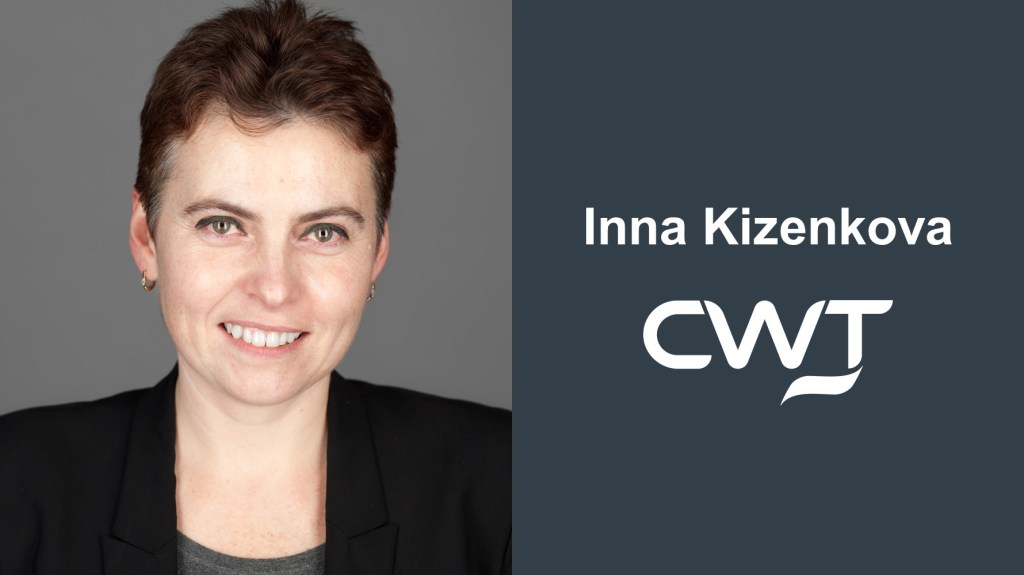
CWT Expands NDC Team with new VP, air distribution partnerships appointment
CWT, the B2B4E travel management platform, has appointed Inna Kizenkova as Vice President, Air Distribution Partnerships, to its dedicated team focused on developing next generation airline distribution capabilities, including New Distribution Capabilities or NDC.
Inna will work closely with internal and external stakeholders for airlines, GDSs, OBTs and other air distribution partners, and will report to Erik Magnuson, Vice President, Air Distribution Capabilities, who leads CWT’s air distribution initiative.
“With Inna’s appointment, CWT continues to accelerate its efforts to modernize the consumption and onward distribution of future airline content,” Magnuson said. “Inna’s solid background, working with airlines from a GDS and TMC perspective, is uniquely suited for this role, which is designed to increase collaboration with our supplier partners to improve product differentiation and to do it at scale and efficiently while ensuring the optimization of user experience.”
Prior to her new role, Inna served as CWT’s Vice President, Global Supplier Management, EMEA, where she spent the past three years growing CWT’s airline and ground relationships. Before joining CWT, Inna was Vice President of Supplier Commerce, EMEA, at Sabre, where she led the team managing supplier relationships with more than 200 airline and rail customers.
Inna holds an MBA from the Cox School of Business, Southern Methodist University, and a BS and MS in Economics from the University of Latvia.
CWT is a leading global partner in business travel, meetings, and events. Operating across six continents, we deliver sustainable, tailored solutions that help organizations connect, engage, and thrive in an evolving world. Our myCWT platform integrates advanced technology with human expertise to simplify travel and enhance traveler and attendee experiences. Extensive global coverage, seamless data integration, AI-driven analytics, and carbon-conscious travel tools enable businesses to optimize their travel and meetings programs while delivering measurable value.
With 150 years of industry experience and a deep commitment to partnership, CWT collaborates with clients to shape the future of business travel and events, making them more efficient, responsible, and impactful.
-
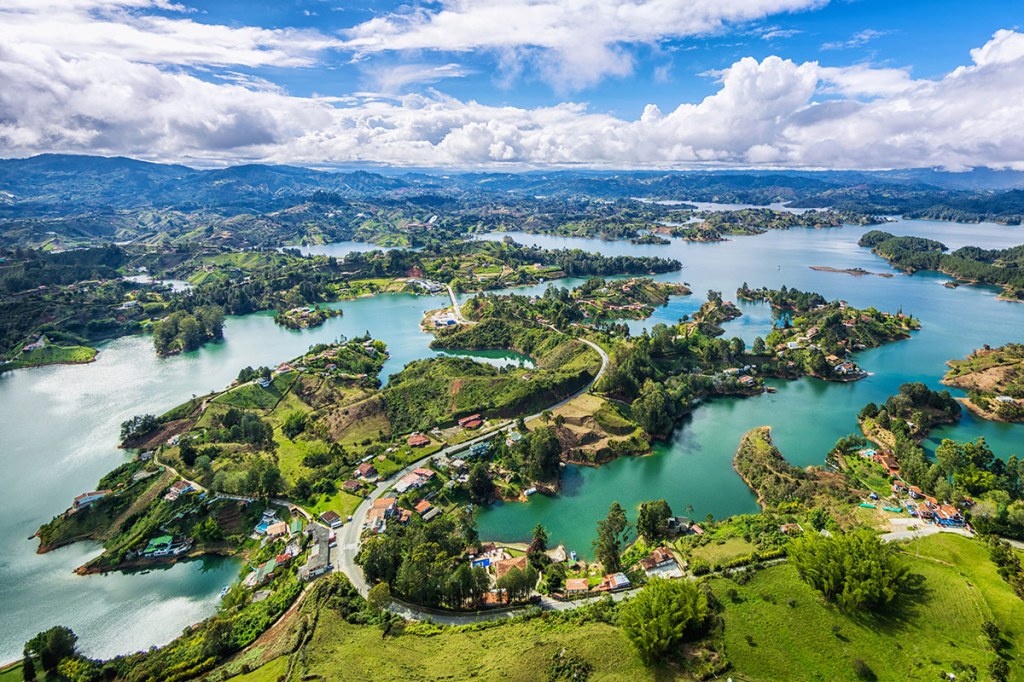
Medellin – Discover Colombia’s mountainous province
Medellin is the not only the largest Colombian city, but the most forward thinking too. Over the past few decades, modernization of the city has brought this valley destination to a completely new level. It may be small for its kind, but Medellin packs twice the punch for its size. The city is home to over two million citizens, art-drenched streets, excellent cultural attractions, and known to be one of the top corporate destinations in Latin America. Its growth has brought great business traction, especially for meetings and events.
Meet in Medellin
Bringing business to Colombia opens new doors, with an extensive array of meetings and events facilities available in Medellin. The Plaza Mayor exhibition and convention center resides in the heart of the city, acting as a platform for business services, events, and various exhibitions. The vast facilities available mixed with the local charm and cultures makes it the perfect destination to host your next meeting. Can you see yourself here?
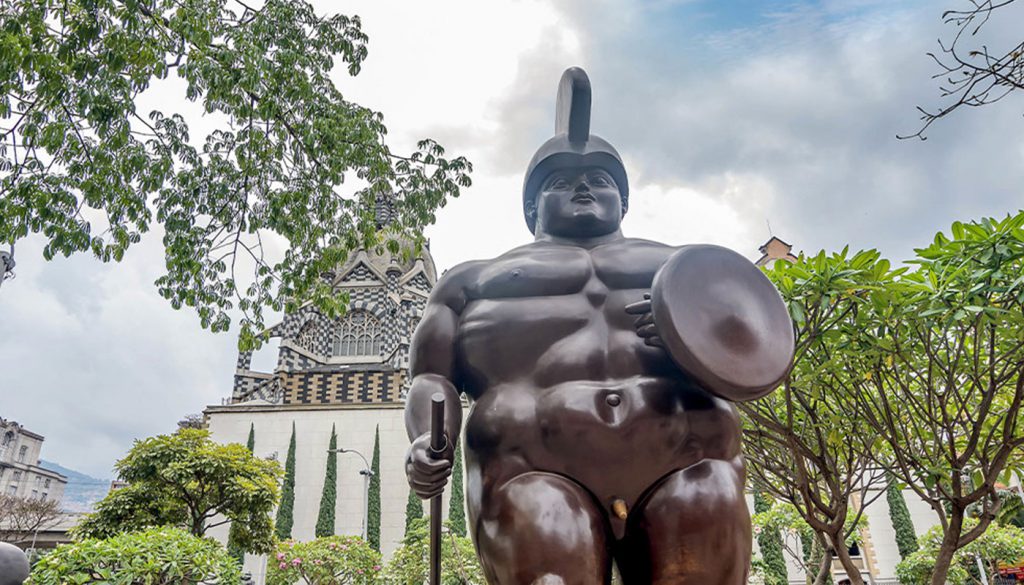
Host and stay
Medellin has a great choice of hotels to stay in while you are away on business, and equally, double up to have a large amount of event space too. Nothing is better than attending an event that is only a few floors below. The Medellin Marriott hotel has 163 spacious, modern guest rooms, and boasts a sizeable 293 square meter ballroom and smaller board rooms too. If you were looking for a boutique hotel with vast venue space, Du Parc Royal hotel a newly built property with 50 guest rooms and 290 square meters of event space would be an ideal option.

Dine like a local
Medellin is home to a large variety of different food, and fusion using a combination of nearby countries produce. For example, the most traditional dish of the Antioquia region is “Bandeja Paisa,” which is a mix of white rice, red beans and shredded meat. The best place to try this iconic dish would be at La Casa de Beto.
Another must try traditional dish is “Mondongo,” a tripe soup made with an assortment of vegetables and garnished with coriander. Often served with a side of rice, ground meat and avocado. The best place to try it is a restaurant named after the soup itself, Restaurant Mondongos. The portions are very large, so you may want to think about sharing with your colleagues – a perfect way to get to know your team over some delicious local food.

Traveling to Medellin
Traveling to Medellin is easier than ever with American Airlines’ Group and Meeting Travel (GMT) program; passengers can travel together in large groups of 10 or more to explore this popular destination in Colombia. Take advantage of group fares and special pricing for meeting, conference and incentive travel, and enjoy several key benefits, such as:
- Discounts for both premium and economy cabins
- Improved seating assignments, making it easier to keep passengers seated together
- Block fares that provide guaranteed fares and allows your group to hold space up to 11 months in advance
- Zone fares that guarantee fares from various geographical zones of departure
It is time to host your next meeting or event in Medellin.
This edition of See Yourself Here is proudly sponsored by:

Insider insights
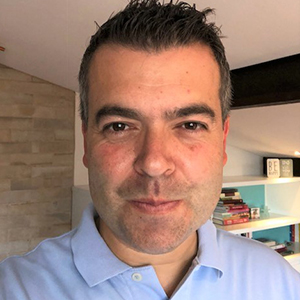
Gustavo Elbaum, Senior Director Of CWT Meetings & Events Latin America:
“Medellin is known for its incredible weather all year round – in fact, it is called the city of eternal spring. Medellin is also one of the main destinations of non-conventional venues for events. Just to name a few, such as the orchid expedition at Joaquin Antonio Uribe botanical gardens or the famous statues located in Plaza Botero, visitors get glimpse of magic and entertainment that Medellin has to offer.
I would personally choose Medellin to host events, as it is one of the most innovative cities in the world. It also possesses a true sense of culture that can be seen through our creativity and execution. Medellin is highly recommended for attracting business and investment opportunities showing an outstanding focus on customer service and tourism opportunities.”
-
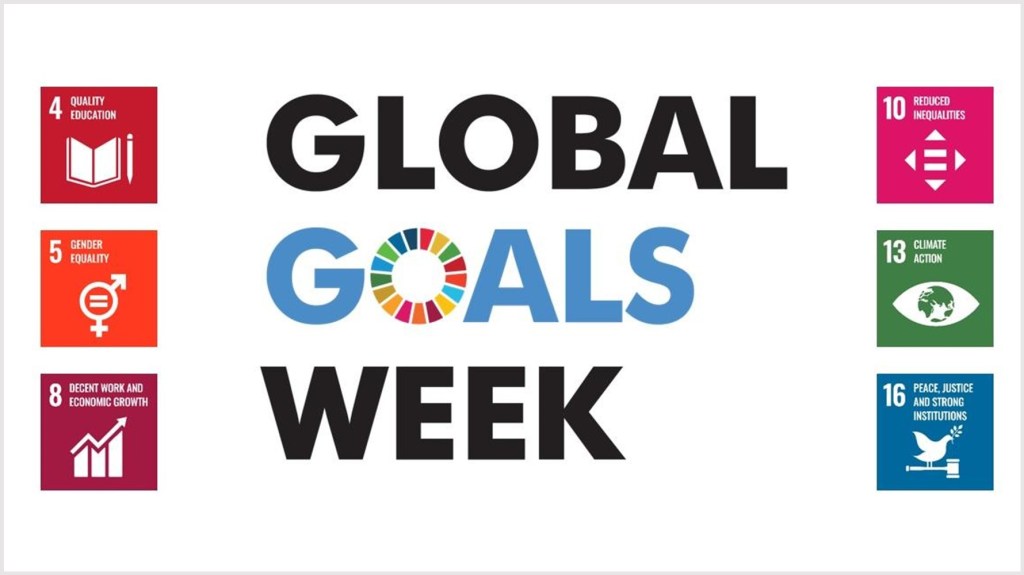
How we support the United Nations Sustainable Development Goals all year round
This week marks the celebration of the UN Global Goals Week 2019.
Starting last Saturday, 21 September, and running until the end of the month, this United Nations campaign is designed to drive action and raise awareness of the 17 Sustainable Development Goals (SDGs), which aim to end poverty, fight inequality and injustice, and halt climate change by the end of 2030.
We would like to take this week as an opportunity to join and engage in the conversation by highlighting the efforts we put in place at CWT to help reach these goals.
To maximize our impact, at CWT, we have selected six goals that best allow us to focus on where we can make a difference.
SDG 4: Ensure inclusive and equitable quality education and promote lifelong learning opportunities for all.

Obtaining a quality education is the foundation for improving people’s lives and sustainable development. We contribute to this goal by championing education and employability for young people as part of our 3E Community Involvement strategy (Education, Emergencies, Essential needs).
Two examples of our engagement in this area are:
We have been supporting the GTTP for the last six years. On behalf of CWT, I sit on its Advisory Board, and we sponsor a program that trains primary and secondary-aged students in 14 countries on how to pursue a career in the travel and tourism industry.
In 2018 alone, we provided work experience to students from low income backgrounds in the US, funded IT solutions to educate children in need in Colombia, raised funds and participated in an educational field trip for students in the Philippines, and continued our decade-long support of an orphaned child in a Tanzanian village.
SDG 5: Achieve gender equality and empower women and girls.

To help achieve gender equality and empower women and girls, we work to promote equality across our organization worldwide. Just last year we:
- Organized non-discrimination training sessions for all recruiters to prevent and avoid discrimination.
- Offered unconscious bias training and easy-to-use tools to our employees around the world.
- Ran a communications campaign to promote our updated Code of Business Ethics and Conduct, which addresses anti-harassment and other key topics. The campaign also encouraged employees to report any improper or inappropriate behavior, in accordance with local laws and regulations.
SDG 8: Promote sustained, inclusive and sustainable economic growth, full and productive employment and decent work for all.
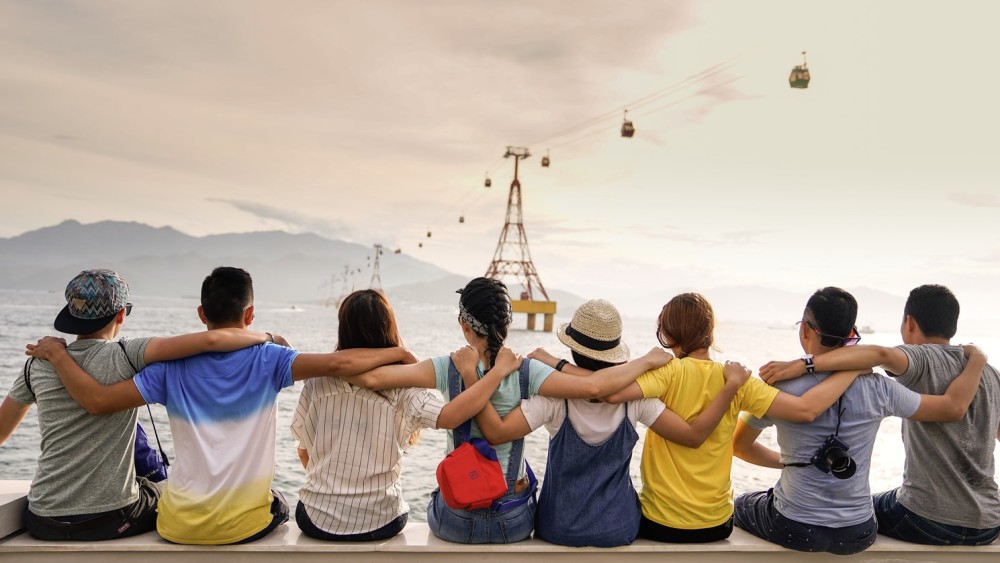
Through our human resources and human rights efforts as well as our business performance, we provide quality employment and contribute to economic growth in the countries in which we operate.
We also have a Responsible Purchasing Program in place to ensure that our partners in the supply chain uphold the same rigorous standards of ethical conduct than we do.
In 2018, we updated our CWT Responsible Supplier Code to align with our commitment to fight human trafficking and in accordance with the UK Modern Slavery Act. This allows us to reinforce our actions towards preventing the use of any forms of modern slavery in our supply chain, enabling us to promote decent work beyond our own operations.
SDG 10: Reduce inequality within and among countries.

We help to reduce inequalities by holding ourselves to high standards of conduct and maintain a zero-tolerance stance on any forms of discrimination or harassment.
We promote equal opportunities for all, regardless of ethnic and cultural backgrounds, age, religion, gender, sexual orientation or disability.
In 2018, we published our vision, high-level objectives, and principles about diversity and inclusion in the form of a Global Diversity & Inclusion Charter informed by the UN Global Compact and the UN Women’s Empowerment Principles.
SDG 13: Take urgent action to combat climate change and its impacts.

We believe that the best way to consistently improve our environmental performance is to create a culture that promotes environmental responsibility internally. Every year since 2015, we organize a global week-long campaign to raise awareness on how employees can contribute to our environmental objectives. In 2018, our Environmental Awareness Week focused on the topic of responsible meetings and events.
As well as raising awareness, we promote initiatives that improve the environmental footprint of our processes and day-to-day activities. From creating more environmentally responsible office spaces to improving our waste management processes and even offsetting the carbon emissions of certain internal events, we continued to roll out local initiatives to make a global impact.
SDG 16: Promote peaceful and inclusive societies for sustainable development, provide access to justice for all and build effective, accountable and strong institutions at all levels.

One way we promote peaceful societies and help build strong institutions is by having a global Anti-Human Trafficking taskforce in place, whose mission is to raise awareness and take positive action.
We also collaborate with partners such as the World Childhood Foundation, ECPAT, Orphaned Starfish Foundation, and Thorn to fight abuse, exploitation and trafficking of children.
For instance, in 2018 we launched with ECPAT International digital anti-trafficking ads on our platform myCWT to create awareness among travelers about reporting signs of sexual abuse and trafficking. The campaign was led with a clear call to action: report it.
To find out more about our initiatives addressing the SDGs, read our Annual Responsible Business and if you want to share with us what are yours, we will be delighted.
-

Five ways to increase your attendee engagement for live events
As we discovered from the CWT 2020 M&E future trends report, attendee engagement is about going above and beyond. Giving attendees a level of commitment, involvement, and excitement at your event. The main objective is to provide attendees with a valuable takeaways from your event, whether it be new connections or for them to learn more, buy more or sell more. Using cocktail hours, inspiring speakers, or captivating stats, we have a few tips to help your attendee engagement skyrocket at your next live event.
1. Make it Personal
Attendees want to feel valued and excited when an invitation hits their inbox, right through to attendance at your event. By focusing on them, sending personalized and relevant emails and sharing essential information before the event, an attendee feels recognized for taking part. During your event, ask specific questions with regards to their attendance or during interactive sessions, such as what they want to learn. It gives them the opportunity to be in control and gain relevant insights.
2. Build in live digital interaction
It is essential to get all the critical concepts across during a session. Attendees feel encouraged to participate with live polling and when the microphone turns to them to ask their desired questions. Most sessions finish with a five-minute Q&A session at the end, but most attendees have forgotten what they want to ask by that point, which can be fixed using a “Slido” type app to overcome the issue. Implementing regular intervals at the end of every important topic allows attendees to interact and develop the conversation further.

3. Networking is back in vogue
Networking plays a large part in event attendance. Providing allocated slots increases the chances of having an engaged group of individuals who are also looking to build the network of influence. Who can I meet that helps meetings and events grow? For those who are explicitly seeking to network, featuring it on an event schedule encourages attendance and participation. Add slots between speakers, activities or host a post-event cocktail hour. This provides opportunities to set up a successful networking space.
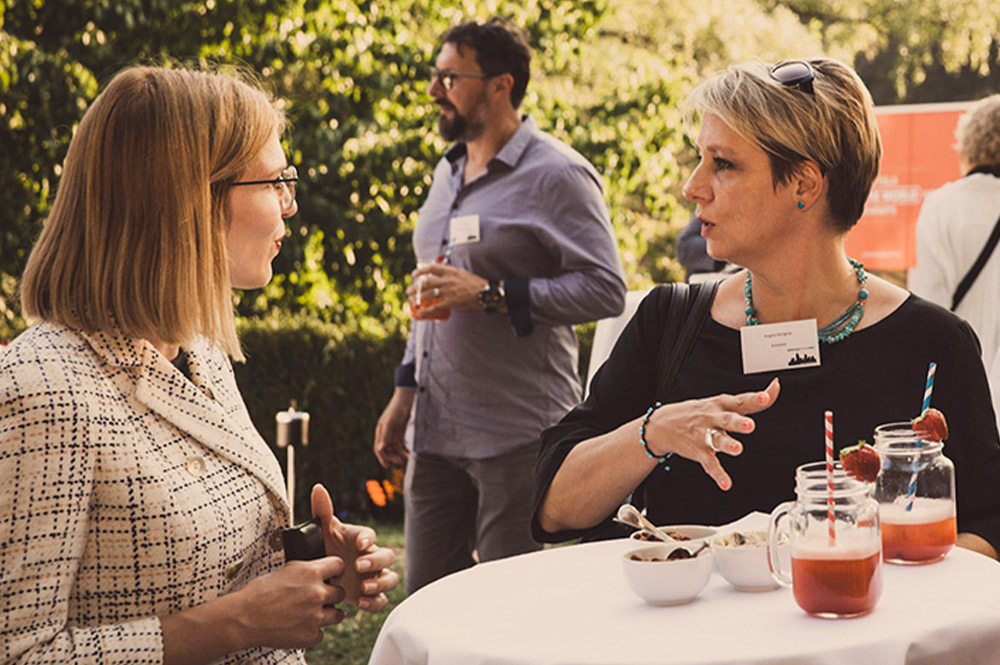
4. Content is king!
Selecting enthusiastic presenters is the first step to get your attendee motivated, but presenting captivating content is what steals the show. Give your attendees a reason to talk by pushing the envelope, providing them with educational takeaways, and plenty of inspiration. It is good practice to show what you are discussing through pictures and graphics, with only a few critical points on the slide. Sharing real-time data using pre-event surveys and displaying the stats on their responses is extremely insightful too.
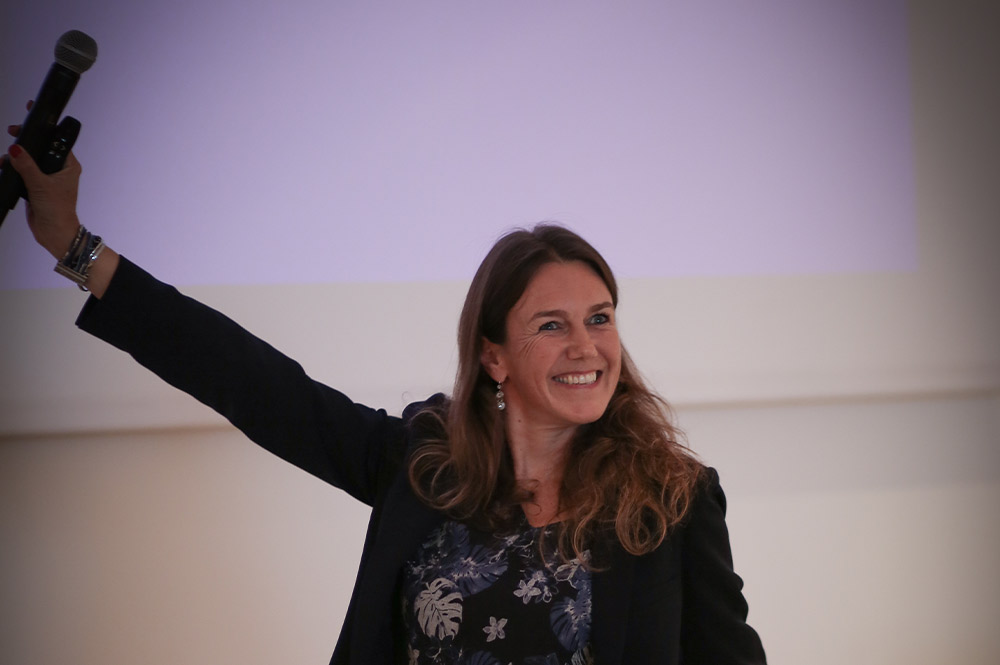
5. Interact directly with your audience
Using different platforms, you can instantly engage with your audience. Use social media to create a personalized hashtag providing regular updates and announcements of cocktail, networking sessions – ongoing communications with your attendees is a critical success factor . During your sessions, you can also use interactive polls and questionnaires, allowing attendees to feel like they are actively contributing too.
Ian Cummings, Vice President of CWT Meetings & Events, EMEA shares his input on what it takes to engage attendees at live events:
“It is important to start building attendee engagement well before the event starts. By asking attendees to download your curated event app, and giving them the freedom to select their dinner preferences, build their agenda with activity selection and using AI and bots to decide who they need to connect with during socials. It is also an opportunity to build excitement around CSR activities and share ideas about sustainability with attendees. Today’s employees require an equal balance of educational gain, networking and opportunities to explore new experiences. Once they arrive, add plenty of “wow” factors, including the presence of an engaging and inspiring (maybe even celebrity) keynote speaker. Finish up the event with a fabulous gala dinner, giving people time to socialize and enjoy downtime together.”
-

Matchmaking for M&E – How to choose the right partners for your meetings and events
A meeting or event is like a giant jigsaw puzzle — numerous pieces must come together in the right order for the final outcome to be a success. For that to happen, it’s imperative to choose the right partners when planning an event – ideally, partners whose business philosophy and corporate code align with your own. Putting together an event is a complex maneuver, one that involves numerous suppliers of products and services, from venues and ground operators to DMCs, AV companies and caterers.
Here are a few things to consider when selecting partners for your M&E program:
Brand Width
Choosing the right venue or ground operator often comes down to the simple metric of coverage of a brand. They should be present in all the regions where you frequently organize meetings and events, and just as importantly be well-located within each destination.
The benefit of choosing a brand with a large reach, especially for a hotel or venue, is the opportunity it allows a planner to recreate an experience in disparate locations: If the event you held at Hotel X Tokyo last week is a runaway success, the same experience should be easy to replicate at Hotel X Jakarta down the road.
That said, a planner should always look at the relevant type of venue — some industries like pharmaceutical have strict sourcing rules and won’t use luxury hotels, for instance — and consider whether it is appropriate for the specific type of meeting or event being run.
An overarching benefit of using a supplier with broad, international coverage is that it offers leverage from a buyer’s perspective, and by using a single company helps the client through the consolidation of costs. For venues or tour operators that don’t have coverage in the regions that you are considering, opting for a local outfit is unavoidable. But don’t assume this is a bad thing — a locally based business might have connections that afford unique local experiences not open to a multinational chain.
Counting Costs
Cost is an issue that everyone will scour unrelentingly. A planner might dream of partnering with the best venue or ground operator in a city, but the client’s budget might not stretch that far. To make sure you and the client are aligned, be realistic with the budget from the outset as this will govern the path forward.
The Internet, for all its faults, has helped to democratize information and is a useful source for evaluating rates for venues, operators and other providers. Use it to check prices but bear in mind many factors feed the price advertised on the screen. Hotels package rates might include breakfast, they might not, they may be calculated with tax, they might not. Ground operators might offer similar quotes for a five-hour excursion, for instance, but one might come with VIP access or welcome amenities missing from the other quotes.
To make a fair comparison, don’t focus on the big number, but scan the line items to ensure you are comparing like with like. If you do find an attractive quote from a provider, but feel that it is too high, unbundle some items — you can always customize a product to negotiate on cost.
As a final resort, consider pre-payment, which often results in a lower rate, but be warned that this often brings with it the risk of cancellation penalties if the meeting or event is called off.
Capable hands
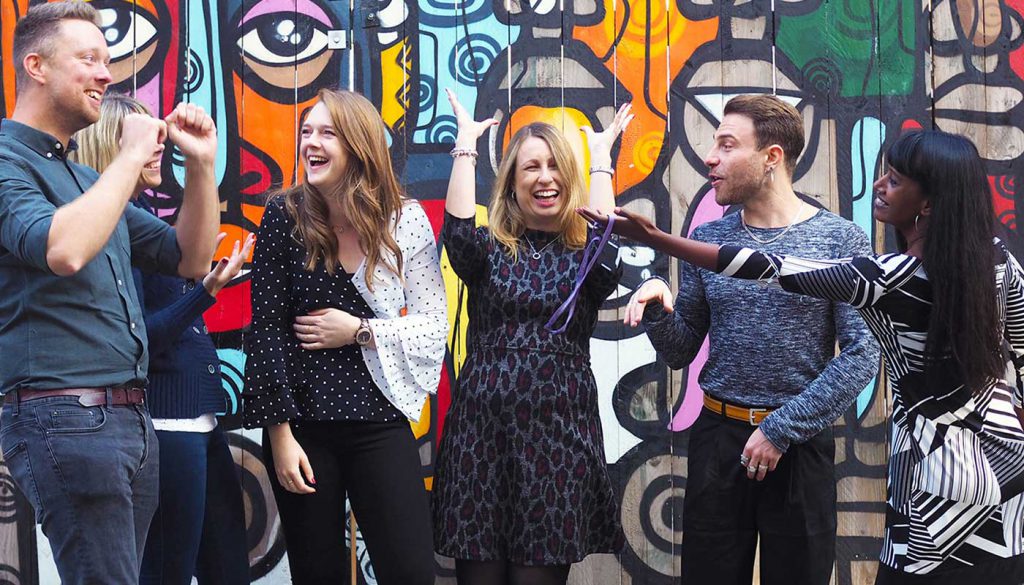
IWhen choosing a ground operator or other service provider, do not invite unexpected surprises by using a newly minted supplier because it promises the moon for half the price of its competitors. Experience and capability should be factors that need to be assiduously gauged and analyzed when choosing the right partner.
A planner’s operations team should be able to get recommendations from peers and also from destination tourism boards, who often compile a list of certified tour operators and other providers with a good service record.
When gauging a venue’s or ground operator’s capability, a good starting starting point is to ask them what they can do for a client or get them to suggest something new. If you find you have asked them for something that they can’t arrange — a dinner for 50 set in the water at beachfront resort, a city tour on a motorbike sidecar for example — they should at least offer an alternative that they can deliver. If a provider says straight up no, look for another one.
Furthermore, beyond a venue’s or tour operator’s verbal or written dialog, study its financial stability, do a credit check, ask for its existing portfolio, look at the vehicles in its fleet and check the licenses to see whether they are owned or leased. If you can avoid using a ground operator or provider that might go bust during an event simply by a small amount of due diligence, isn’t it worth it?
A Question of reputation
Although an intangible commodity, reputation can have an outsized impact on a planner’s decision on whether or not to use a venue or operator. Everything can be searched on the Internet, and there’s little room for a venue, tour operator, activities provider, or other service to hide from incidents of bad service, botched activities, food poisoning, or room disasters.
There are a number of sources where you can check on a provider’s reputation – from tourism boards to simple feedback on user-populated sites like TripAdvisor, from reading the local and international news to a hotel’s main general sales office (it can usually suggest which properties in any given city are, and aren’t, suited to your meeting or event).
Even something so seemingly innocuous as small talk with peers at networking events can throw up precious nuggets of information. It’s also critical to do site inspections of properties wherever possible, to ensure whether they match up to their purported reputation. When a tourism board or organization arranges a familiarization trip to a destination, sign up — it will only serve to boost your knowledge of the destination and the providers operating there.
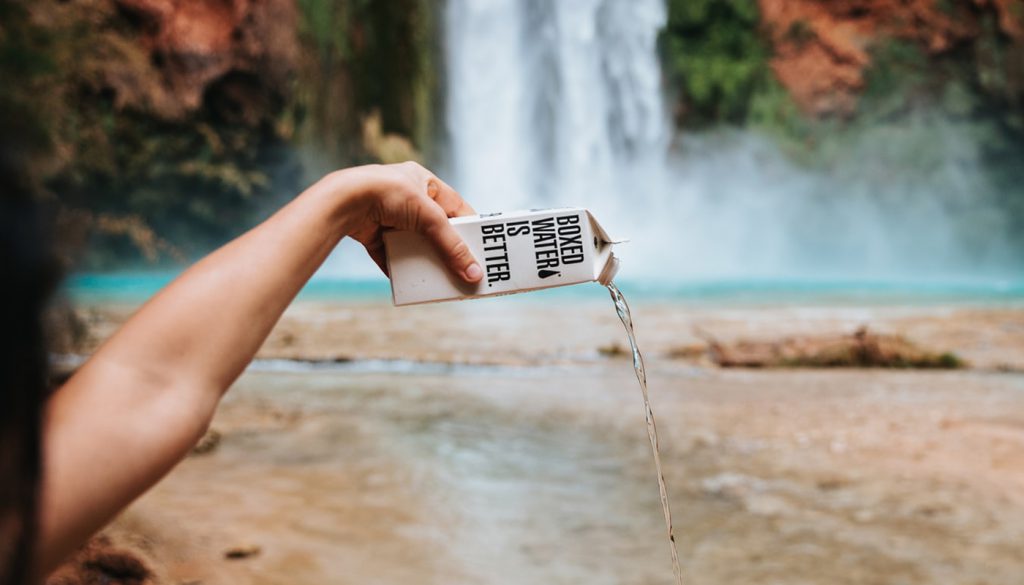
Responsible business practices
In this day and age, corporate social responsibility (CSR) is a requirement for businesses looking to build strong connections. Enquire about venues’ and providers’ responsible business credentials during the RFP process.
Beyond simple initiatives like the banning of plastic straws and single-use water bottles, look at what else the venue or operator is doing, and also get a sense of whether its values align with those of your organization. Is the hotel you are eyeing a green building with independently assessed benchmarks that attest to its environmental protocols? Is the ground operator or activities organization gender-inclusive, does it offer multi-racial rights, does it have an ethical supply chain? For tour agencies, do they offer activities that in any way compromise the environment, or do they do things that might disturb or impinge on ethnic tribes for instance?
At the end of the day, doing your research is key. Invest the time to understand which companies are reliable, responsible and align closely with your M&E program’s requirements and your own organization’s values.
-

The secret life of chefs
How a chef can cost a million dollars
Gordon Ramsey may be one of the world’s richest chefs, making well over a hundred million dollars, but even a non-celebrity chef with no Michelin Stars can be worth as much. How? As with most things, it’s location, location, location. Or in this case, rotation, rotation, rotation. The chef needs to be working on an offshore oil rig, typically situated far into the ocean. As with most remote locations, there’s often a complex process involved in bringing people (and food) on board. A rig is like a mini-city in the middle of the water. Think island, but elevated and minus the sand and palm trees. Like New York, it’s mostly steel and concrete, and it never sleeps.
These mechanical islands can be as big as two football fields, weigh more than 300 Boeing 747 jets, go as high as 40 stories, and as deep as one-and-a-half miles underwater. They’re staffed with 50 to 200 people or more, working 12-hour shifts. Each job function has two sets of crew, and the crews rotate every three to four weeks. Making sure they get from Point A to Point D requires the kind of logistics precision and technology expertise that CWT ERM has honed over the decades.
Unlike regular city commutes, transporting a chef from home to rig usually takes at least four steps, involving a car, a plane, a shuttle and a chopper. Getting the entire crew through the first leg of the journey—on the plane—and when and where they need to be is absolutely critical. If the chef misses his flight, the whole crew cannot be rotated. That could cause work on the rig to be halted or delayed, potentially costing up to a million dollars a day.
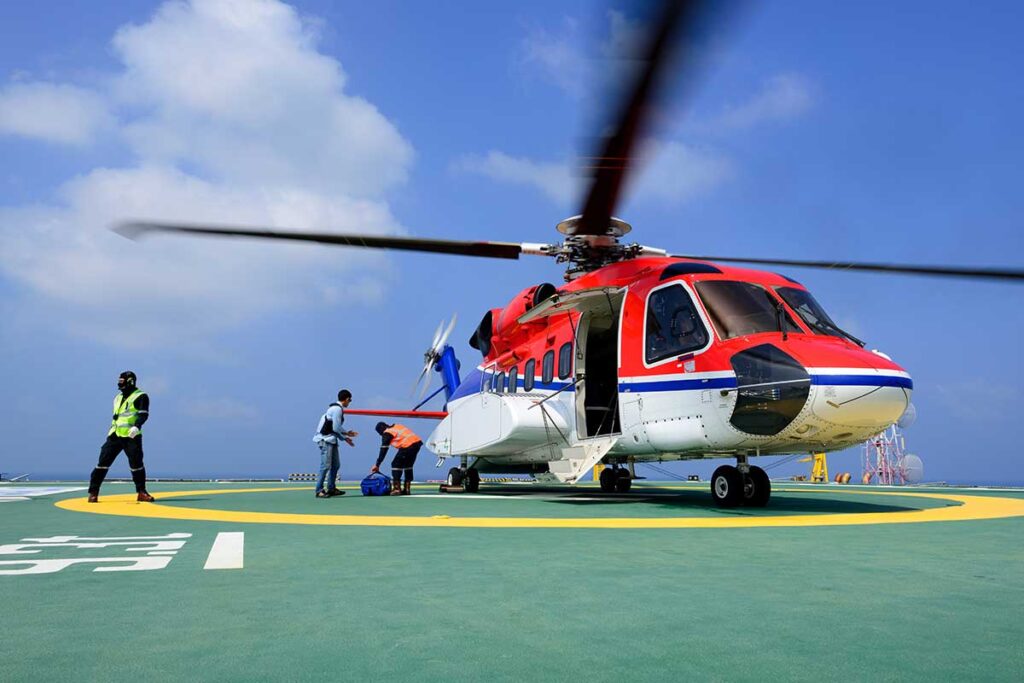
Granted, the current chef stays on until the replacement crew arrives. But, after almost a month marooned in open water, buffeted by harsh elements, feeding a large crew every three hours for 24 hours x 28 days, one simply cannot guarantee the chef’s state of mind—nor the quality of the cooking. Kitchen Nightmares anyone?!
Find out how we operate to ensure your travelers get to destination on time and safe.
Image credits: Adobe Stock
-
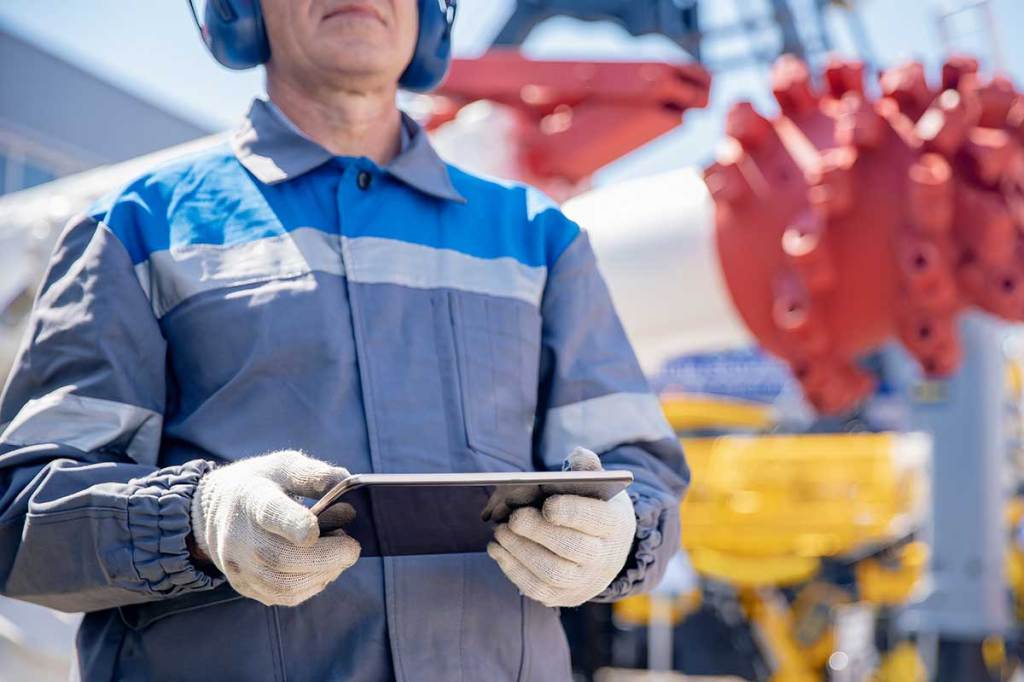
Virtual Payment
The virtues of virtual payment
Traditional credit cards have been used for more than half a century. Accompanied with risks and inefficiencies these cards can be problematic. With virtual payments, companies can pay for their travel centrally and achieve greater flexibility.
Requiring no physical plastic, virtual payments use a unique ID, making it both easier to identify and track a transaction.
This report explores the phenomenon of virtual payments in corporate travel, and uncovers the myriad of benefits for companies including an offshore drilling company that overcame challenges of fraud and security with this digital process.
Do you think virtual payment might be for you? This paper will shine some light on your travel program, and what next steps you will need to take.
Image credits: Adobe Stock
-

Employee spotlight: Libby Donald – How technology is empowering program management
Hear from Libby Donald to find out more about her experience in CWT’s customer management team for Energy, Resources and Marine in Asia Pacific, working with one of our biggest clients.
Tell us about your role
I used to work for one of our major oil and gas clients and I am based in Melbourne, Australia. I was responsible for ensuring that the nine countries we service in APAC meet our contractual obligations of our customer, deliver on our service level agreements, provide a consistently high level of customer satisfaction, and keep finances on track.
What makes a good customer manager?
Passion, honesty, integrity and doing what you say you will do. I am passionate about the industry I work in and the client I work with. Our client has diverse operations in APAC and we have been working on a huge project with them that is very exciting to be a part of. I also try to put myself in the client’s shoes, to make sure that what we deliver to them will meet their expectations and their own objectives within their business.
What’s your approach to your job?
I work from home and I find that this really helps me to be able to focus on prioritizing my workload. I also try to have a lot of involvement within the CWT APAC client team. I like them to know that what they do counts and is integral to the overall customer program.
How are you helping CWT to achieve its strategy?
I worked with a client that used to be a follower and not a leader in this space. However, I think that the overall trust that has been built up within our entire global team that works with our client has changed this quite dramatically, and our client is now eager to pilot new initiatives. We rolled out hotel rate tracker in several countries worldwide, including Australia and Singapore in the APAC region. I had weekly calls with my regional client contact to discuss the latest technology and how this could potentially benefit them in this region.
Tell us something not many people know about you
Well, we sold our house in Melbourne and we moved to the beautiful Noosa Heads area on the Sunshine Coast in Queensland, Australia. If you haven’t been there, you definitely need to check it out!
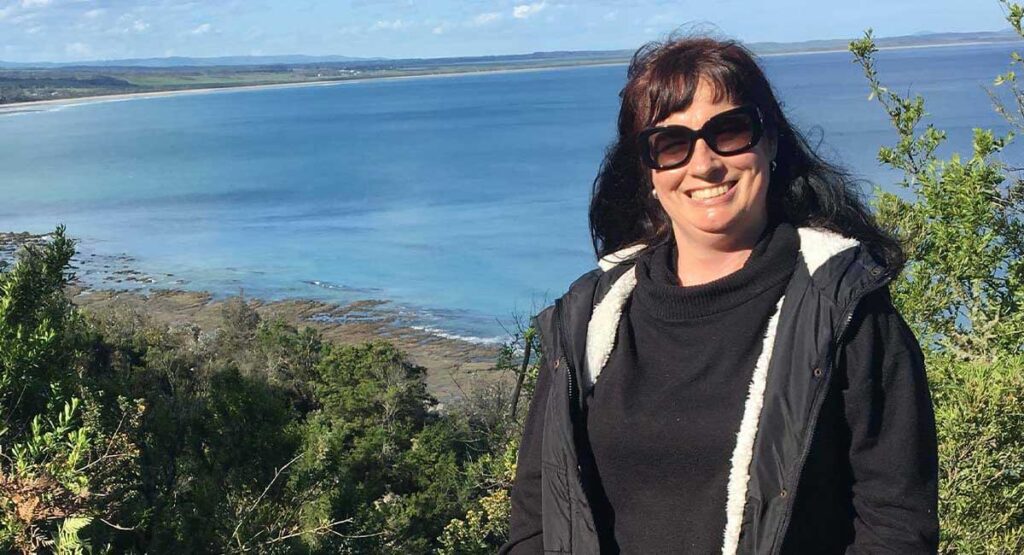
Image credits: Libby Donald & Adobe Stock
-

Energy giant endorses myCWT as their go to app for keeping employees up to date and counts 10,000 registered users

CWT’s app filled company’s needs
The company embraced myCWT as its first approved travel app. The travel department appreciated that the mobile app kept employees up to date on flight information and itineraries, all in an easy-to use format that’s certified PCI-compliant.
myCWT was a hit with frequent travelers, because they saved time booking their company’s rates and preferred hotels through the app. They appreciated booking on the go without the necessity of logging in to their company’s network or online booking tool. Moreover, myCWT pulls traveler profile information, including loyalty program numbers, from CWT Portrait into the reservation, making the booking process simple and quick.
All hotel booking data from the app was captured for reporting and traveler tracking, which supported employee safety, a top priority for this industry.
Popular companywide
Thanks to an initial campaign and approximately 200 employees downloading the app each month, the firm counts more than 10,000 registered myCWT users.
“myCWT keeps travelers informed and productive before travel and while on the move, with new enhancements coming all the time,” said CWT’s program director.
Although company personnel initially expressed concerns that average hotel rates could increase due to app use, that wasn’t the reality. Rates were on par with or lower than those booked through other preferred channels and traveller compliance remains high.
The travel department said its travelers feel more productive with this highly rated, easy-to-use app that allows them to manage their trips, and the travel department regularly gets kudos for introducing a digital aspect to the travel program.
-

Working in life-and-death situations – Why CWT Energy, Resources & Marine’s customer teams are leaders in travel experience
By Lucy Gibson, Senior Director, global Travel Experience, CWT
We were assisting with a perilous evacuation for one of our large oil and gas clients in Iraq. Air strikes had been authorized to protect civilians from Isis forces, creating a very dangerous situation for those ex-pats who had not yet evacuated. We were working hand-in-hand with our client to ensure their travelers’ safety. We quickly set up a situation room, which provided hourly status updates on bookings and any other critical changes happening on the ground.
We worked all hours from Thursday to Monday to secure flights, contact charter companies, make last-minute changes, book hotel and ground transportation, and liaise with local partners even as the situation remained fluid.
It was exhausting – both physically and mentally – because the situation was truly life or death. Finally, on Monday afternoon, we received a call from a member of the evacuating team telling us they had safely made it over the border into Turkey.
I will never forget the sound of his voice, and the fact that our team made a difference, not just to his life, but to his team’s life, and the lives of their families. I am always proud of my team, but this situation truly made CWT Energy, Resources & Marine shine.
Never a dull moment
I wear many hats as global traveler experience (TX) senior director at CWT. However, my most important role is ensuring my teams have the support they need. My days starts out at 6:00am so that I can check in with my teams in EMEA and NORAM before diving into email. As the central point person for many CWT Energy, Resources & Marine operational questions and queries globally, my colleagues keep me very busy.
Designing the traveler experience
Our goal is to help reduce stress for your traveling employees. A World Bank study showed that 75% of staff reported high or very high stress related to business travel. Environmental, Social and Governance (ESG) activities are central to how we think and act at CWT Energy, Resources & Marine, from the frontline counselors through to the technology solutions we offer.
Making travel seamless
The CWT approach is simple: we want to provide a seamless traveler experience. We serve our clients with booking that is accessible no matter where your employees are: online, via an app, or over the phone. Specific to CWT Energy, Resources & Marine, we are leaders in the field because our online booking platform integrates all elements of a trip on one platform, creating an end-to-end journey that manages each aspect of commercial and logistics travel.
Using travel data and machine learning, our technology allows us to “know” our travelers, with call recognition and alerts on current bookings, past travel history, unused tickets and personal preferences. We use these tools to give traveling employees a personalized experience that makes travel less stressful and more efficient.
What’s next for TX in business travel
Technology integration will only become more important in the years to come, which is why we have invested heavily in this area. We partner with start-up technology companies to ensure we are always one step ahead of our client’s requests, and we are already implementing some of them, like messaging, to help travelers solve problems even faster when they are on the road.
Our teams make the difference
ERM University is a bespoke online training course we have developed for our CWT Energy, Resources & Marine teams, with each level of the program certified and mandatory for our people. This certification ensures that all employees from senior leadership to business development, program management, and frontline counselors are aligned with our goals, products, and culture.
I manage a global team with an average of 20 years in the ERM industry, and every day I receive compliments from our clients about the service they have received. Some of the words used are “efficient”, “professional”, “compassionate”, and “dedicated”.
I am extremely passionate about CWT Energy, Resources & Marine. I believe in honesty, transparency, and being able to articulate why change is important. I feel this is my biggest contribution as it creates positive energy in our teams.
The most rewarding part of my job is when my team tells me I have made a difference. I believe I have the hardest working team on the planet, so when they say they feel more connected and proud of what they do, it means the world to me.
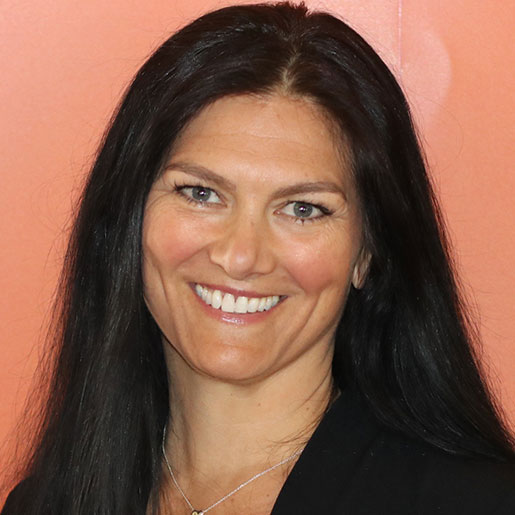
Lucy’s top tips for travel professionals:
- Foster an inclusive culture.
CWT Energy, Resources & Marine has a culture of inclusion and integrity. We are all passionate about what we do, but we also take time to breathe and celebrate our successes. - Work towards work/life balance.
Setting boundaries is something I have learned over time as it did not come naturally for me. I now make sure I plan my meetings so that I have evenings free to focus on my family and do all possible not to travel on a Sunday. - Take time to unwind.
I love the outdoors, and take every opportunity to go for a hike, run with the dog, or paddle in my kayak. When feeling adventurous I participate in triathlons and marathons – now that’s a great stress reliever!
Image credits: CWT & Adobe Stock
- Foster an inclusive culture.
-

Why strong emergency support for ERM companies is essential when a hurricane hits, working additional 4,000 hours on 121,000+ cancelled and delayed flights
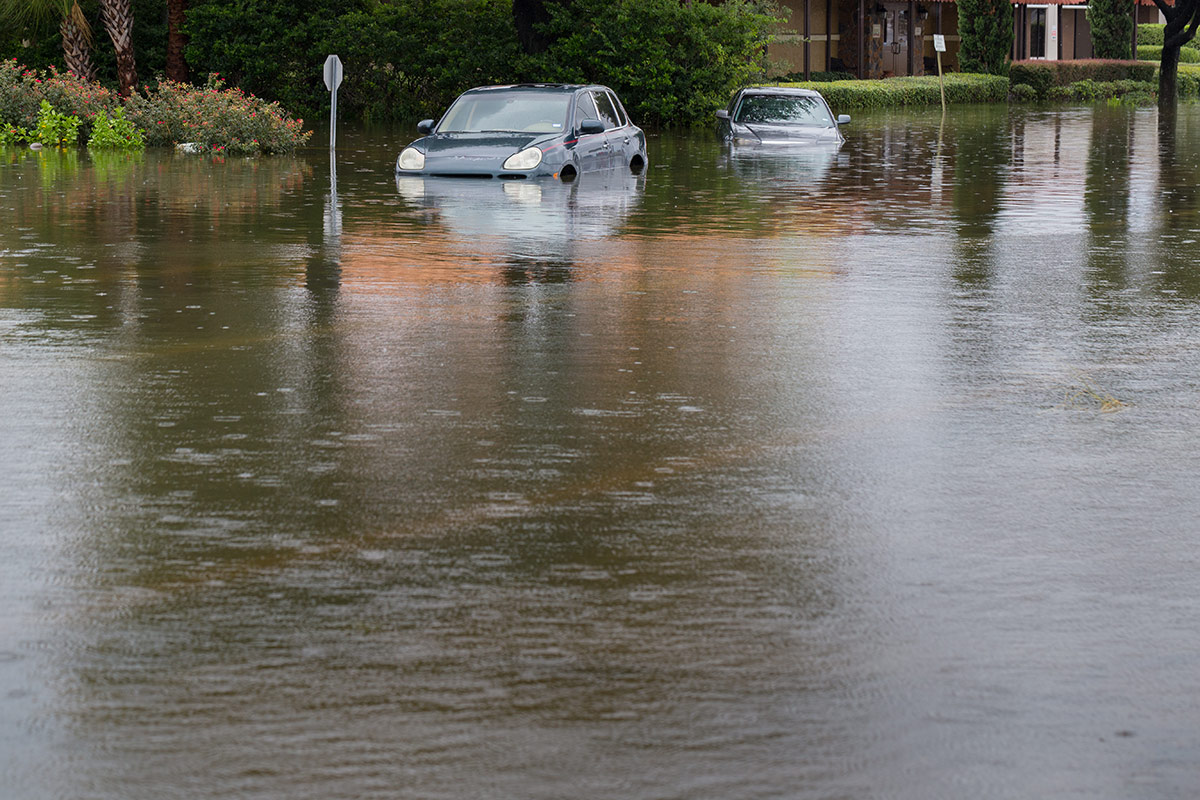
Results at a glance
- Minimal impact to clients
- Clients trust to take care of their people
The challenge
Carol was waist-deep in water, frantically looking for a high and secure place to store her laptop. The driving rain, gusty winds and flooded streets wrought by the hurricane, did not make it safe to bring anything but the clothes on her back, a converted garbage bag as raincoat, and overnight clothes. She settled on a high shelf and quickly evacuated her home. Carol, a senior international travel consultant for CWT, would spend four months living and working from a travel trailer next to her home, while it was undergoing the slow process of reconstruction.
The hurricane was a category 4. For CWT’s Energy Resources & Marine (ERM) team in Houston, it is, in Carol’s words, “business as usual” even though life was turned “upside down”.
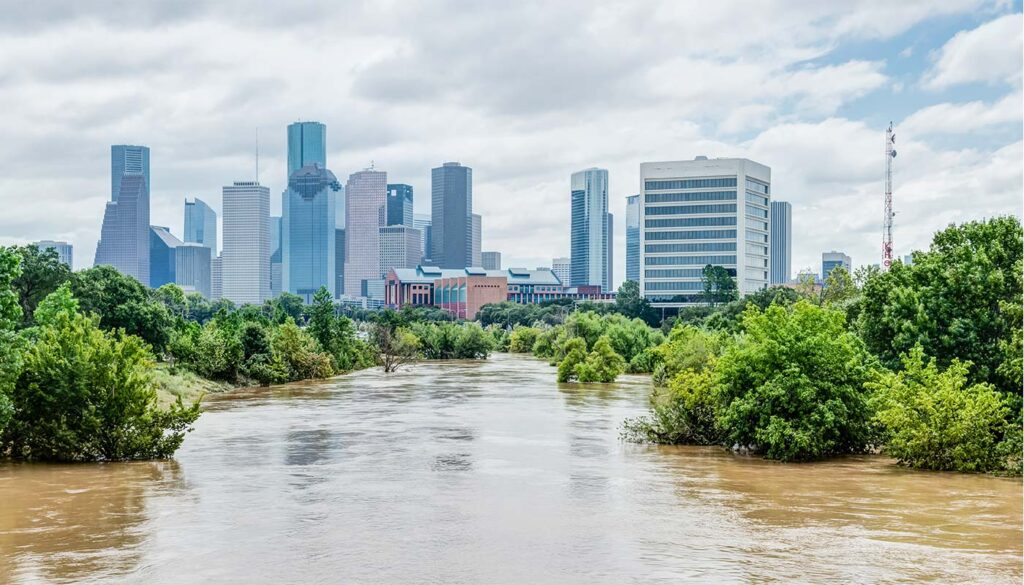
The solution
During the hurricane, 95% of CWT’s agent workforce were up and running, working round the clock on more than 121,000 cancelled and delayed flights, and putting in an additional 4,000 hours across the network—before, during and after the storm. As soon as a hurricane is forecast to make landfall in Houston, a volunteer emergency response team (A Team) is assembled, ready to be deployed at a moment’s notice further to San Antonio or Dallas, with families in tow. It has a backup team (B Team) similarly ready to be activated, ensuring that there are groups of people who are 100% fully functioning. They are supported by an H Team, or home team, whose agents are based out of state, and ERM 24 that’s staffed 24 hours between two continents.
“Proactive planning makes a difference,” said the Operations Manager, CWT ERM, who helped assemble the teams.
CWT issues an alert, runs reports of who is in Houston, and works to get a large proportion of travelers out before the storm hits, including on offshore rigs where entire crews need to be evacuated. CWT also sends updates to travel managers about the status of airports, so they, in turn, can communicate with their staff.
The result
The result is minimal impact to clients.
“Clients trust us to take care of their people,” the Operations Manager said. “They were taking our direction, and it worked out pretty well.”
Category 4 storm, notwithstanding. -

From mine to mine
When one thinks of diamonds, one imagines brilliant stones cut and polished to perfection, emitting cool points of light against the warmth of bare skin. They evoke romance and love, commitment and happiness.
But not all diamonds become exquisite pieces of jewelry. Some studies indicate that as much as 75-80% of global diamonds produced end up in decidedly unromantic places. We take you through the journey of a diamond that is more grit than glam, and much more masculine than one would typically associate with this most feminine of gems.
Diamond in the rough
There are more than a billion carats of diamonds that can be recovered from the 10 largest diamond mines in the world, according to Mining Technology. That’s where our journey begins. A crew of miners, geologists, drillers, rock specialists and general workers are deployed to Russia, Botswana, South Africa, Australia, Canada, and other top diamond-producing countries. They come from around the world and are sent to remote diamond-rich regions via a work commute that involves a complex series of coordinated steps and stops—from ground transportation to one or two commercial flights (domestic and international), an overnight accommodation, followed by additional travel by land, sea or river.

The journey is not without risks. Some diamond mines in Africa are located in areas still recovering from decades-long conflict. While some of Russia’s biggest diamond mines are in remote, inhospitable places in the country’s far northeast, where temperatures can drop to below 50 degrees. Regardless of the distance, climate, terrain or situation on the ground, making sure the crew gets to its destination safely and on time is the critical first step in a diamond’s discovery.
Sorting from 1 to 12,000
Once a crew arrives in a mine, the hard work of digging for these precious stones begins—often in 12-hour shifts for 14 straight days, followed by two weeks off. With more than 12,000 different categories of diamonds, according to De Beers, the combined expertise of man and machine is required to sort them for the next leg of their journey.
A fair few make their way to fine jewelry. The rejected majority end up in a much less delicate employ—as industrial diamonds encrusting drills and cutting saws, especially useful in the oil exploration and mining industries. It’s no surprise that the hardest substance known to man would be used for such rough labor. Diamonds may be known more as a symbol of love with its strength and invincibility, but these same characteristics also distinguish them on the field.

Back to the mines
Some diamonds that were extracted and sorted in Botswana could be sent to a diamond drill bit manufacturer in Texas, and later shipped as equipment to Angola. Meanwhile, another crew goes through its own complex rotation, traveling a similar route to reach an oil exploration field in Texas, an offshore rig in Australia or a mining site in Africa. Using the diamond drill bits and saws, they drill wells or cut through granite to extract copper, zinc and yes, even diamonds—completing the gem’s multicontinental journey from mine to mine, and proving its eternal utility no matter what form it takes. As they say, a diamond is forever.
Image credits: CWT & Adobe Stock